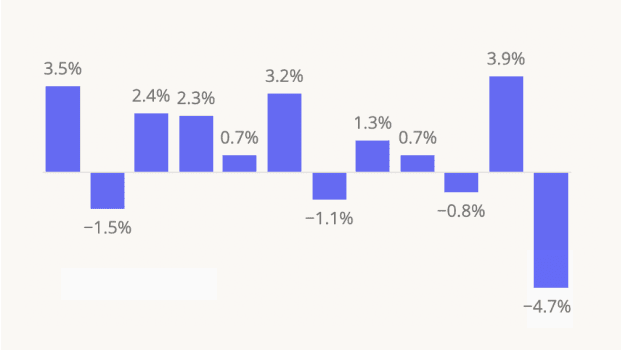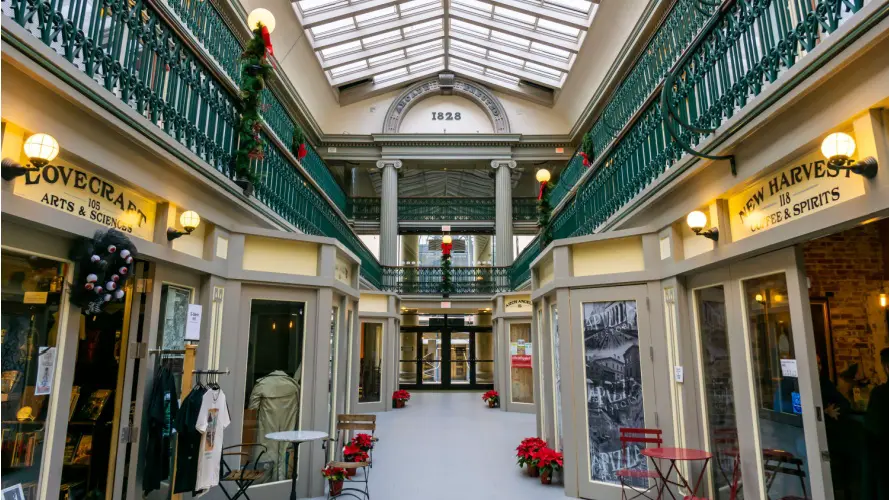Imagine being able to literally pop downstairs for your favorite coffee shop, boutique, or to pick up a novel from your local bookstore. At the Arcade mixed-use shopping center in Providence, this is not a pipe dream, but a reality. Originally built in 1828, this historic building was conceived as a social and commercial hub filled with wares from merchants and artisans where customers could shop even in inclement weather. Nearly 200 years later, the purpose remains the same. However, as suburban shopping centers proliferated in the last few decades, Arcade struggled with its foot traffic.
Arcade Providence's Transformation
In 2008, it closed for renovations and reopened in 2013, transformed into a mixed-use commercial and residential micro-loft space. The top two floors consist of 48 micro-lofts with 225-300 square feet of living space. None have stoves or ovens, perfect for those Carrie Bradshaw type occupants who would otherwise store sweaters in their ovens. Those coming from densely packed urban areas like New York or Tokyo would appreciate the minimalism and efficiency of these lofts. Upon opening, there was a waiting list of 4,000, making obtaining a spot even more competitive than getting into an elite university.
Shifts in Audience Composition
The Arcade Providence still operates retail and dining spaces on the ground floor, including local favorites like a Lovecraft-themed bookstore, or Lobanton, an Asian-fusion sandwich shop. The Greek Revival-themed mall also hosts New Harvest Coffee & Spirits and restaurants like Rogue Island, all of which attract a steady stream of visitors.
How has the shift to mixed-use impacted the psychographic composition of the venue's visitor base? We compared the segments visiting Arcade Providence in 2018 vs 2024 and found some interesting shifts that have occurred in the past six years. Visitors in 2018 tended to come from the Young Professional (26%) or Educated Urbanites (18%) segments (per the Spatial.ai PersonaLive classifications). However, six years later, the share of those segments in the Arcade's visitor base have declined, while the percentages of visitors from the Upper Suburban Diverse Families (from 10% to 13%) and Ultra Wealthy Families (from 5% to 11%) segments have increased.
Increase in Trade Area Size
The change in visitor demographics is likely driven – at least in part – by the increase in True Trade Area since the Arcade's shift to mixed-use. The 2018 trade area (in blue) covered only 29 sq miles, whereas the 2024 trade area (in green) has expanded to 65 miles.
The Arcade is located in downtown Providence, so this increase in trade area size suggests that the venue is now attracting visitors from more suburban areas beyond the city center, which typically include more family-oriented and wealthier zones.
This nearly 200-year old shopping center exhibits our ingrained human tendency to congregate, conduct commerce, and socialize. It also shows the constant evolution of how we live, work, and play.
For more data-driven CRE insights, visit placer.ai/anchor.




.svg)





.png)
.png)

.png)
.png)






.avif)


